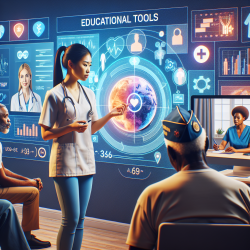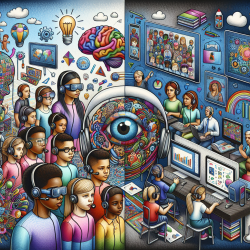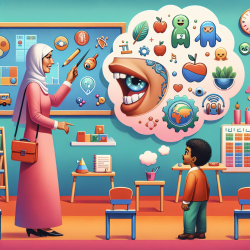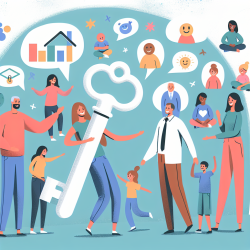Introduction
In the evolving landscape of healthcare, the implementation of educational tools is crucial for improving patient outcomes. A recent study titled "Dissemination and implementation of an educational tool for veterans on complementary and alternative medicine: a case study" offers valuable insights into effective dissemination strategies. This blog post explores the findings of this research and how practitioners can leverage these insights to enhance their skills and improve outcomes for children, particularly in the context of online therapy services provided by companies like TinyEYE.
Understanding the Research
The study focused on disseminating a DVD, the STAR Well-Kit (SWK), to introduce U.S. Veterans to Complementary and Alternative Medicine (CAM) techniques. The research highlighted the importance of engaging both patients and providers in the dissemination process. The study utilized a multi-phase approach, first focusing on spreading experimentation with the SWK and then integrating it into usual care.
Key Findings
Several critical findings emerged from the study:
- Active Engagement: Passive dissemination methods, such as leaving materials in waiting rooms, were less effective. Active engagement through direct conversations with researchers or peers led to higher interest and participation.
- Provider Involvement: Providers with preexisting knowledge of CAM and those in supportive environments were more successful in integrating the SWK into practice. Institutional support and provider autonomy were crucial for effective dissemination.
- Multi-Component Strategies: The study emphasized the importance of multi-faceted dissemination strategies that include how-to materials, tailored toolkits, and skill training for providers.
Implications for Practitioners
For practitioners, particularly those involved in online therapy services like TinyEYE, the study underscores the importance of:
- Engaging Stakeholders: Actively engaging both clients and their families in the therapy process can lead to better outcomes.
- Continuous Education: Staying informed about the latest educational tools and techniques can enhance service delivery and client satisfaction.
- Collaborative Efforts: Working collaboratively with other healthcare providers and leveraging institutional support can facilitate the successful implementation of new tools.
Encouraging Further Research
While the study provides valuable insights, it also highlights the need for further research into the dissemination and implementation of educational tools in various healthcare settings. Practitioners are encouraged to explore these areas to continually improve their practice and outcomes for their clients.
To read the original research paper, please follow this link: Dissemination and implementation of an educational tool for veterans on complementary and alternative medicine: a case study.










